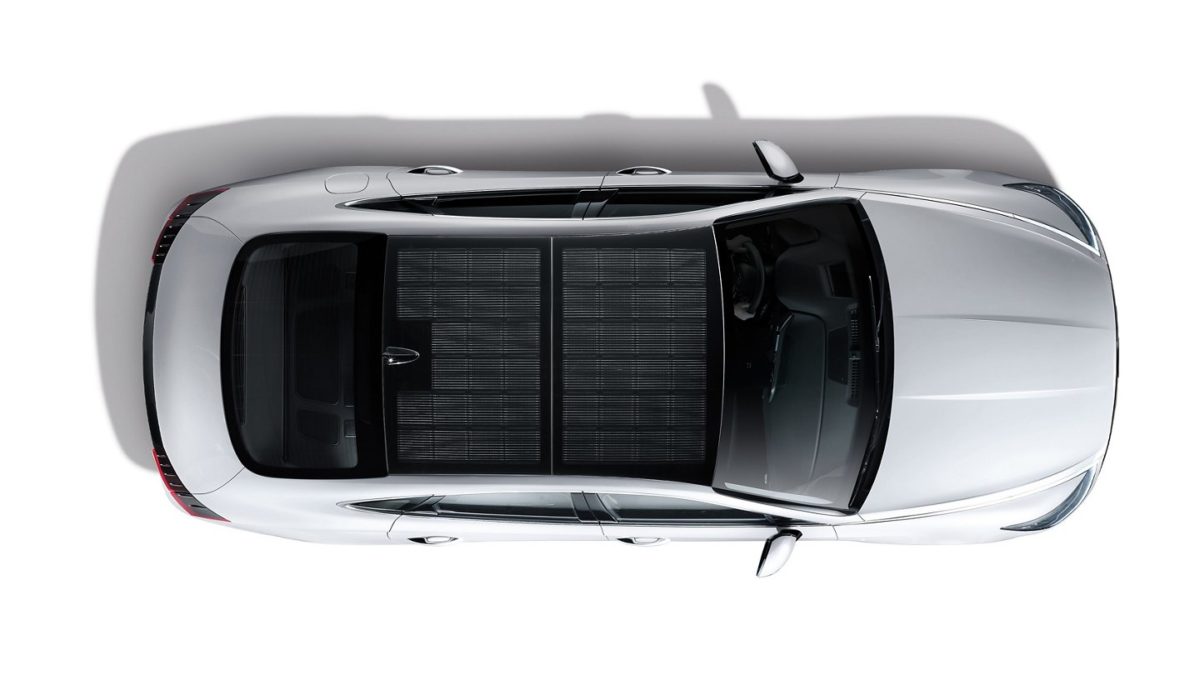From pv magazine Global
The newest model of the Hyundai Sonata hybrid is equipped with a 205W solar PV array that directly charges the car’s battery. It is estimated the PV will add about 2.5 miles of range per day. The solar panels feature 22.8% efficiency.
While this number may not jump off the page as impressive, the solar PV marks an improvement in efficiency for the vehicle that can add up to being significant. Two and a half miles per day for a year comes out to 912.5 “free” miles. Based on an average commuter’s yearly mileage of 10,000 miles, this represents an over 9% improvement to fuel efficiency.
Hyundai said its solar array system comes with efficient design advantages over competitor cars like the solar-roofed Toyota Prius. The Prius has a separate solar battery, requiring two stages of conversions to charge the high voltage driving battery and the auxiliary “starter” battery. The Sonata only converts once, directly feeding power through the panels, to a maximum power point tracker charge controller, and directly into the auxiliary batteries and drive batteries. This leads to more efficient use of photovoltaic generation, said Hyundai.

The automaker said that the solar roof lessens the burden on the engine and prevents battery discharge. The Korea Insurance Development Institute estimates 4 out of 10 emergency on-road services relate to battery discharge, as parked car electrical systems require an average of about 720mAh per day, and black box cameras, which are increasingly being integrated in cars, require an additional 12,000mAh. With the solar roof, one hour of charging can provide 14,000mAh, supplying a car’s powered-off battery needs for the whole day.
While the range added by the PV is not dramatic, efficiency improvements are just that – improvements. Hyundai does not attempt to “greenwash” the product and recognizes that this is not the core of the vehicle’s power, but rather an ancillary system that provides a handful of benefits.
The solar roof-integrated “Limited” trim for the Sonata is rated at 47 miles per gallon and has a 192 horsepower engine. It has autonomous features like remote parking assist, highway driving assist, and has cameras for blind-spot views. Through an app, drivers can access the Sonata using their mobile phone as a key.
This content is protected by copyright and may not be reused. If you want to cooperate with us and would like to reuse some of our content, please contact: editors@pv-magazine.com.









By submitting this form you agree to pv magazine using your data for the purposes of publishing your comment.
Your personal data will only be disclosed or otherwise transmitted to third parties for the purposes of spam filtering or if this is necessary for technical maintenance of the website. Any other transfer to third parties will not take place unless this is justified on the basis of applicable data protection regulations or if pv magazine is legally obliged to do so.
You may revoke this consent at any time with effect for the future, in which case your personal data will be deleted immediately. Otherwise, your data will be deleted if pv magazine has processed your request or the purpose of data storage is fulfilled.
Further information on data privacy can be found in our Data Protection Policy.